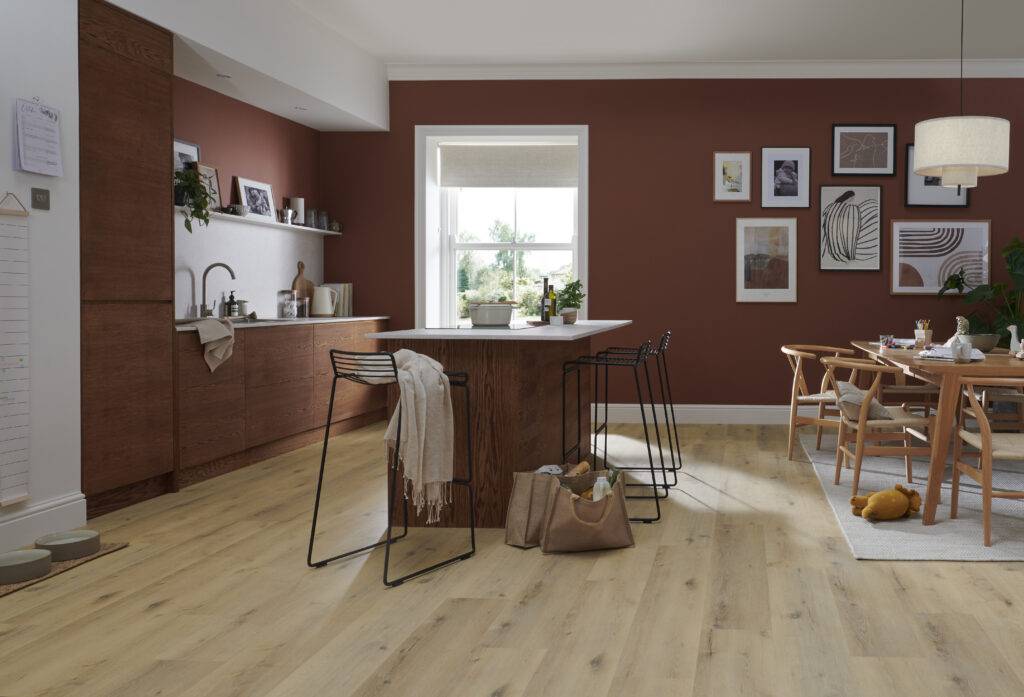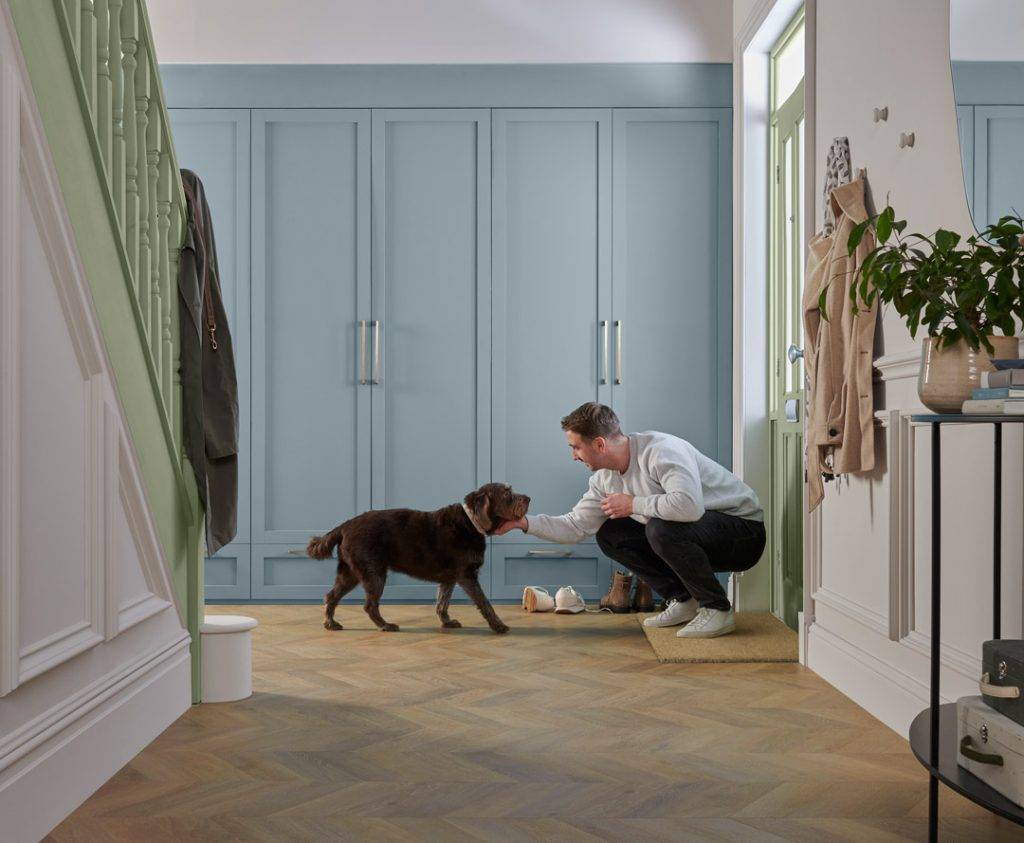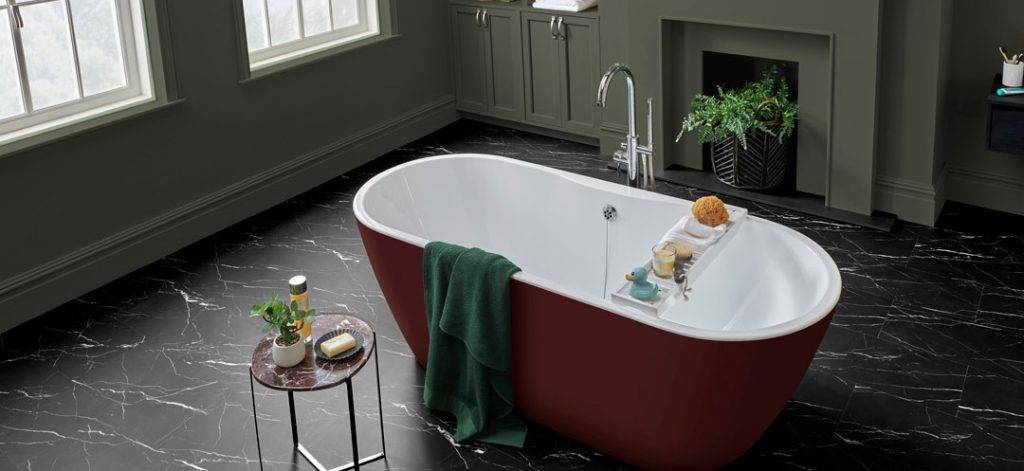Building homes from the floor up
Up to 3 FREE Samples
Menu
Building homes from the floor up
Up to 3 FREE Samples
Home / LVT Bathroom Flooring
Flooring for bathrooms has often been a tricky thing, due to one aspect – water. Water can damage many floors, wood being particularly vulnerable, and many floors that can handle water have often been hard and not pleasant to stand on.
With Luvanto LVT, that changes. Our LVT flooring is fully waterproof and a very comfortable flooring option. It’s easy to clean, as water rests on the surface. Our LVT is strong enough to be used even in high-traffic areas, ensuring you get long-term use out of your LVT Flooring.
Take a look at our LVT range below for our top picks suitable for bathrooms and other high-moisture areas.
Filter By:
Colour
Room Suitability
Plank Suitability
Species
Suggested Flooring
Whether you’re seeking the timeless allure of hardwood or the sleek aesthetic of stone, our diverse range of LVT flooring suggestions promises to elevate your interior with unmatched charm and resilience. Experience the perfect harmony of beauty and practicality as you explore our innovative selection, curated to inspire and transform your home.
Clay Earth
Midnight Olive
Coastal Cottage




Trends come and go but a Luvanto floor is forever.
Keep your interiors looking show-home worthy with our colour and trend inspiration. As experts in colour forecasting and pairings, we match the latest trends and colours with each of our flooring shades so you can stay tickled pink with your décor all year round.
Our customers rate us Excellent
4.7/5 on verified customer reviews
Related Articles
Dive deeper into the world of luxury vinyl tile (LVT) flooring with our curated selection of articles, offering comprehensive insights and expert guidance on this versatile flooring solution. Whether you’re considering LVT for your next renovation project or simply seeking to expand your knowledge, our collection of articles serves as a valuable companion on your journey to achieving beautiful, long-lasting floors.
Frequently Asked Questions
Ceramic Tiles are almost considered a “default” choice for a bathroom floor. However, LVT has qualities that outshine it:
LVT is designed to be resistant to the vast majority of household challenges, so yes, LVT will accommodate most cleaning agents just fine.
The top layer of LVT is something called the “wear layer”. The wear layer is responsible for protecting the floor from most wear and tear issues, but this also includes household chemicals. Wear layers come in different thicknesses. The typical wear layer thickness for a domestic property is 0.3mm, however, Luvanto’s standard wear layer size is 0.55mm. This is usually reserved for areas with high-traffic residential areas and commercial use, meaning that the wear layer will be almost entirely unimpacted through use.
That being said, you should stick to pH-neutral cleaners if you’re worried about damage. PH-neutral products are less aggressive than highly acidic or alkaline products.
If you want the best results, you should go with the Luvanto Floor Care Cleaning & Maintenance Kit. With it, you get a mop head with two cleaning pads, 750ml of initial cleaning solution, 750ml of general polishing solution, and 750ml of clean and strip solution. This should be all you need to keep your floor squeaky clean and protected.
It’s not required, but an underlay made specifically for use with glue-down LVT installations, such as QA SoundBarrier, is beneficial for quite a few reasons.
Sealing the edges of a Luxury Vinyl Tile (LVT) floor is typically not necessary and is not a common practice. LVT flooring is designed to be a low-maintenance and water-resistant flooring option, and is designed to lock together or fit tightly to create a seamless and waterproof surface.
Some flooring, for example, is a floating floor that needs an expansion gap to deal with changes to the floor in different temperature and humidity settings. Sealing the edges could prevent movement and could lead to the floor lifting in extreme cases. Glue-down LVT is by far the best option if you are concerned about water penetration at the perimeter of the room. It is far more stable and less prone to movement, and sealant can be used where the flooring meets the skirting board or upstand.
Yes, LVT Bathroom Flooring and Underfloor heating are both compatible. That being said, the real concern is whether the specific variant of LVT flooring is compatible with underfloor heating. All our Luvanto LVT flooring has a low thermal resistance which is required for underfloor heating to spread heat effectively.
You should also be careful of the underlay that you install, if any, as high TOG ratings (measures of thermal resistance) can block heat from spreading. Luvanto have a range of underlays for LVT that are suitable for use with underfloor heating.
Flooring
Inspiration
Where To Buy
Help And Support
Copyright © 2024 Luvanto - QA Flooring Solutions Ltd. All Rights Reserved.
QA Flooring Solutions Ltd is a company registered in England
Registered Office: Unit 2 Hurricane Drive, Speke, Liverpool, L24 8RL
Company Registration Number: 07870268 | VAT Number: 852026449
| Cookie | Duration | Description |
|---|---|---|
| cookielawinfo-checkbox-analytics | 11 months | This cookie is set by GDPR Cookie Consent plugin. The cookie is used to store the user consent for the cookies in the category "Analytics". |
| cookielawinfo-checkbox-functional | 11 months | The cookie is set by GDPR cookie consent to record the user consent for the cookies in the category "Functional". |
| cookielawinfo-checkbox-necessary | 11 months | This cookie is set by GDPR Cookie Consent plugin. The cookies is used to store the user consent for the cookies in the category "Necessary". |
| cookielawinfo-checkbox-others | 11 months | This cookie is set by GDPR Cookie Consent plugin. The cookie is used to store the user consent for the cookies in the category "Other. |
| cookielawinfo-checkbox-performance | 11 months | This cookie is set by GDPR Cookie Consent plugin. The cookie is used to store the user consent for the cookies in the category "Performance". |
| viewed_cookie_policy | 11 months | The cookie is set by the GDPR Cookie Consent plugin and is used to store whether or not user has consented to the use of cookies. It does not store any personal data. |
Building homes from the floor up
Up to 3 FREE Samples